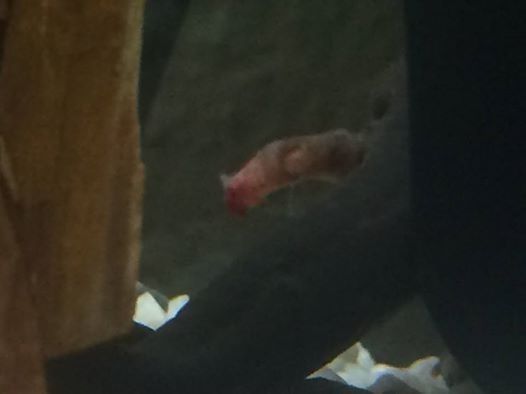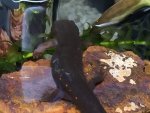kSimp
New member
- Joined
- Dec 15, 2015
- Messages
- 7
- Reaction score
- 0
- Points
- 0
- Location
- USA
- Country
- United States
- Display Name
- Kayla Simpson
Hi, my name is Kayla Simpson. My paddle tail salamander Damon has a very swollen front left arm that looks very pale compared to his normally dark color. He was kept with my other paddle tail salamander named Newt, but he viciously attacked her constantly so I put her in her own tank. Newts wounds healed perfectly, and she is okay. But now out of the blue, a couple weeks after they have been separated, Damon's leg is swollen and discolored when he had no signs of this when he had a tank mate before. He shed last week and ate it, and everything was fine but now this is happening. He is still eating, but does not roam around the tank as much as he used to. Newts tank is always kept nice and chilly between 55-62 degrees F, but Damons tank is in my room, and is more difficult to keep cold, and ranges from 66-70 degrees F, but I try to keep it low as possible so it is usually at 66. I take a cup of his tank water and freeze it in the freezer then put the ice in his tank to melt at least once a day, in attempts of keeping the tank cooler. He has no tank mates other than some snails, and he is kept with gravel and live plants with access to air (10 gallon tank filled half way) and places to climb up on. He doesn't have any hides, but there is a turtle perch that casts shade on one corner of the tank that he likes to sit under, and I rarely put the tank light on (I don't want it to heat up the water, so it only goes on during feedings). Damon also likes to curl around the filter every now and then (I have a little Whisper Filter). He is given a water change once a week. Any ideas what could be wrong with his leg and how I could help this little guy out? 
Quick side note, I do not actually know their sex, I am only guessing.





Quick side note, I do not actually know their sex, I am only guessing.





Attachments
Last edited:












